Does Montana get tornadoes, or is it a state that largely dodges the twister bullet? Well, let’s peel back the layers of Big Sky Country and find out.
In the realm of tornado history, Montana has seen its fair share of these destructive forces. From the largest tornado on record in 1952 to the deadliest one on Father’s Day in 2010, the state has witnessed the impact of these destructive storms. But just how common are they?
Analyzing the data, we’ll explore the expectations for Montana tornadoes. We’ll discover that while the eastern part of the state is more prone due to moist air from the Gulf of Mexico, the central and western regions are drier and less likely to see twisters.
As we go deeper, we’ll also provide essential safety tips for those rare occasions when the sky darkens and the winds pick up. We’ll ensure you’re well-prepared from multiple sources for storm updates to seeking shelter in basements or interior rooms.
- Related article: Montana Weather Conditions
So, whether you’re a Montana resident or just fascinated by nature’s power, this article will help you understand Montana tornadoes and leave you better prepared and more tornado-savvy.
7 Key Takeaways on Tornadoes in Montana
- From 1950 to 2023, Montana experienced 428 tornadoes, resulting in 29 injuries and 4 deaths.
- Tornadoes are most common in Montana from late May to early August, with Eastern Montana being more susceptible to moist air.
- Tornadoes in Montana are typically smaller and tend to occur in sparsely populated areas.
- It is important to rely on multiple information sources and weather apps to stay informed and prepared.
- During a tornado, take shelter indoors in a basement or interior room without windows.
- Secure outdoor items to prevent wind-blown hazards, and avoid overpasses and bridges for shelter.
- Montana’s tornadoes are typically less severe than those in Tornado Alley, with the Enhanced Fujita (EF) Scale used to measure their intensity.
Are Tornadoes Common in Montana?
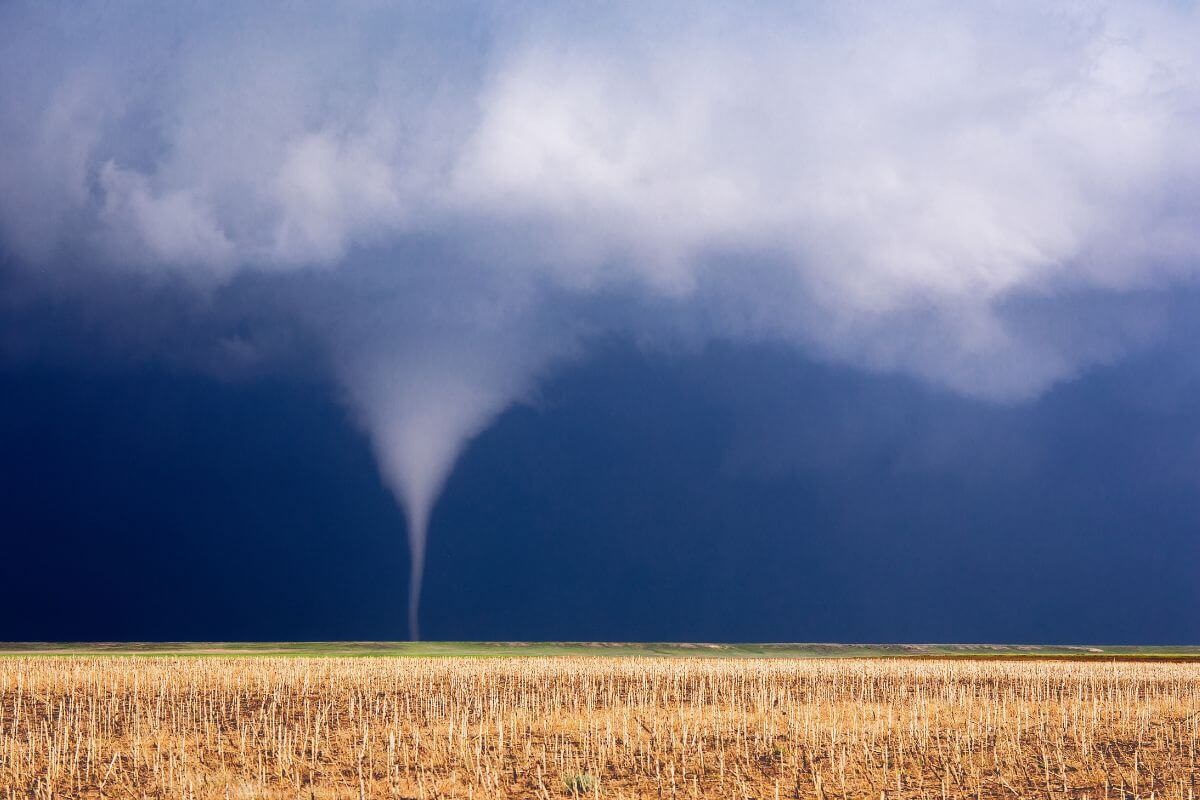
Montana is known for its sweeping landscapes and vast open skies, but how often does that sky turn ominous with the formation of tornadoes? While not as notorious as Tornado Alley in the central U.S., Montana does experience its fair share of twisters.
Let’s dive into the data and see how common these spinning storms are in the Treasure State.
Montana Tornadoes History
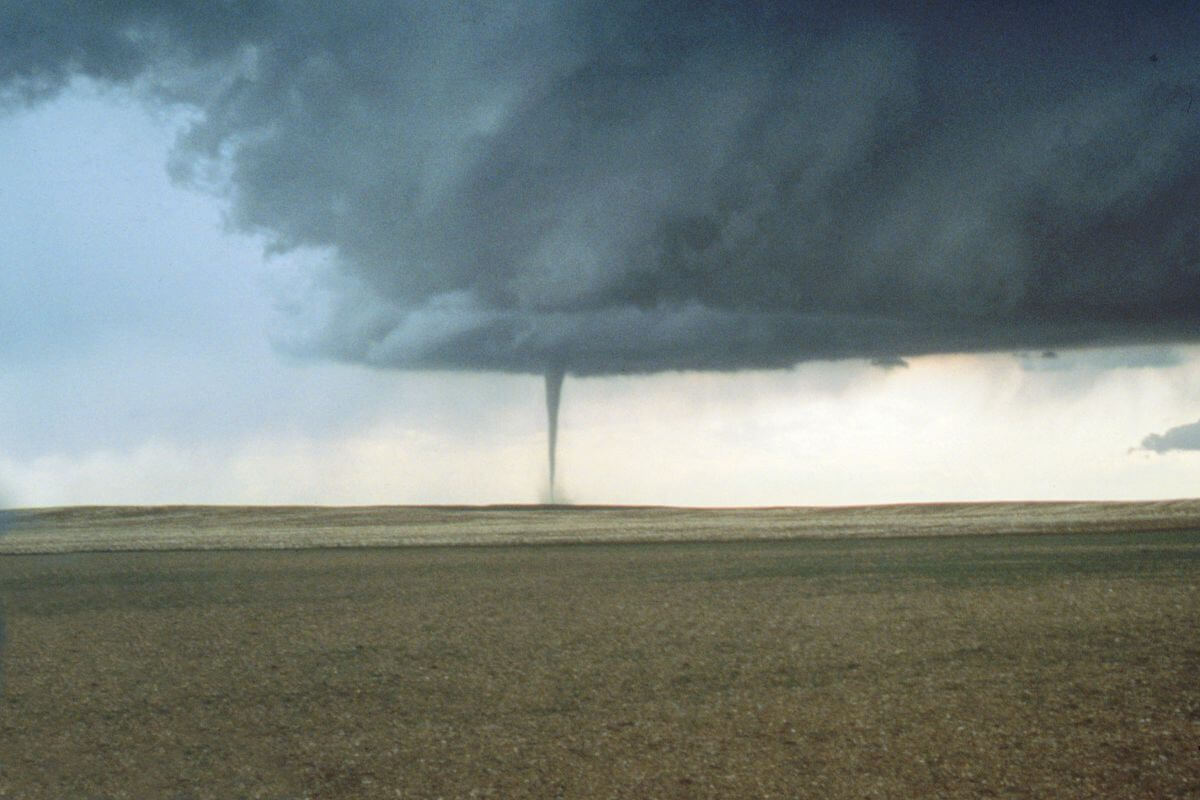
To understand the history of twisters in Montana, let’s look at some fascinating facts and data from tornado tracking experts. According to the National Oceanic and Atmospheric Administration (NOAA), Montana has seen 428 tornadoes from January 1950 to August 2023.
While the state’s record is relatively modest compared to Tornado Alley, it’s still worth noting that these twisters have caused 29 direct injuries and 4 direct fatalities.
Let’s zoom in on the last 5 years of tornadoes in Montana using the chart below:
| Year | No. of Tornadoes | No. of Injuries | No. of Fatalities |
| 2023 | 6 | 0 | 0 |
| 2022 | 3 | 0 | 0 |
| 2021 | 1 | 0 | 0 |
| 2020 | 3 | 0 | 0 |
| 2019 | 4 | 0 | 0 |
One of the most notable events in Montana’s tornado history occurred in 1952. On that fateful day, an EF-3 tornado made its way through Baker, Montana, leaving its mark. Simultaneously, another EF-3 twister touched down in Wibaux, resulting in one unfortunate fatality.
However, the deadliest tornado in Montana’s history struck on Father’s Day in 2010. This EF-2 tornado tore through a populated area in Billings, causing 2 deaths and leaving a lasting impact on the community. Just weeks later, tragedy struck again when a tornado hit a family ranch near Reserve, claiming 2 more lives.
These notable events and the track of tornadoes over the years give us a glimpse into Montana’s complex relationship with these powerful storms. While the state may not see the same frequency or intensity as some regions, staying informed and prepared is essential, as tornadoes can strike unexpectedly.
Montana Tornadoes Expectations
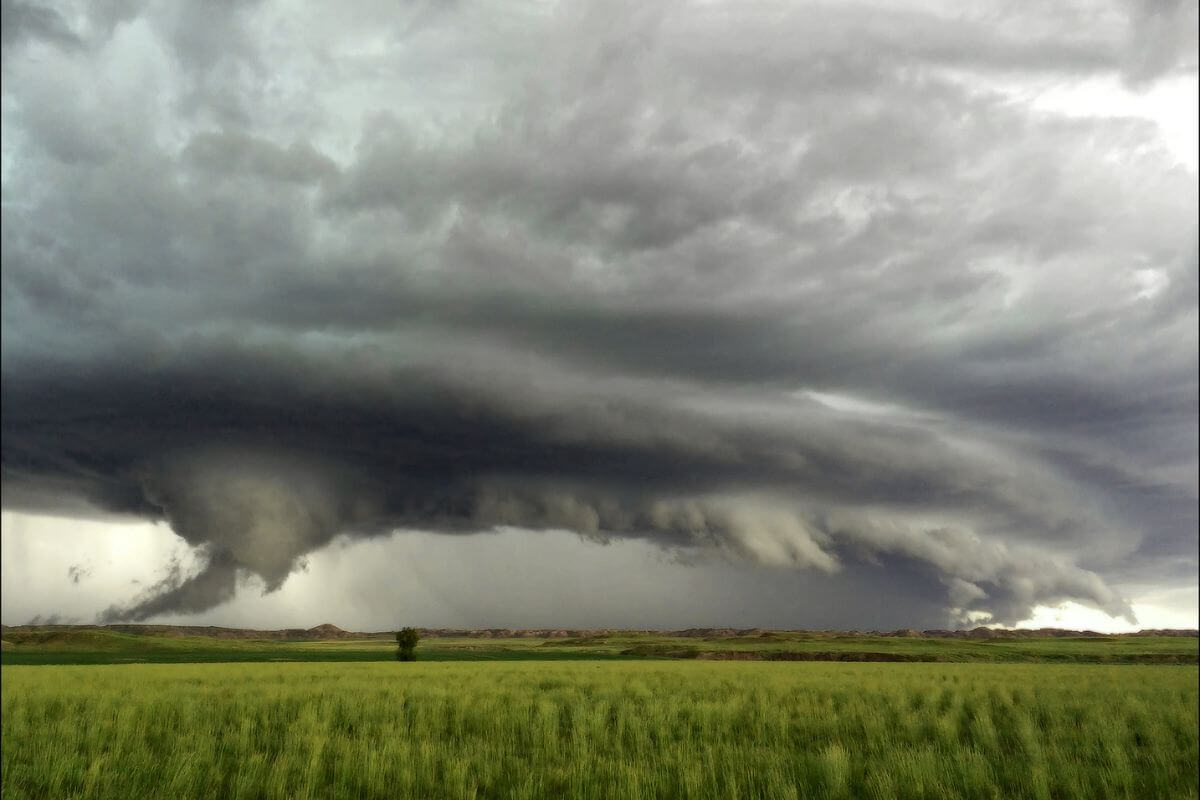
Regarding tornadoes in Montana, the first thing to know is that the risk is relatively low. According to Patrick Gilchrist, a warning coordination meteorologist with the National Weather Service, “When it comes to tornadoes in Montana, it’s really about moisture.”
Here’s what you can expect about Montana’s tornadoes:
- Tornado Season – Late May to Early August
- Tornado Hotspot – Wibaux County, Eastern Montana
- Moisture Matters – The likelihood of tornadoes increases in Eastern Montana due to moist air from the Gulf of Mexico.
- Dryer Air, Fewer Twisters – Central and Western Montana experience less tornado activity due to drier air.
- Topography’s Role – Higher terrain in the west can trigger severe weather outbreaks.
- Smaller and Less Destructive – Montana’s tornadoes are usually small and touch down in sparsely populated areas.
So, if you’re planning a trip to Montana, don’t let the tornado talk damper your adventure. Just keep an eye on the weather, especially if you’re in Wibaux or other eastern regions, and be prepared with a plan in case severe weather does arise.
Remember, while Montana’s skies may occasionally stir up a twister, they’re far from the relentless fury in “Tornado Alley.”
Montana Tornadoes Tips
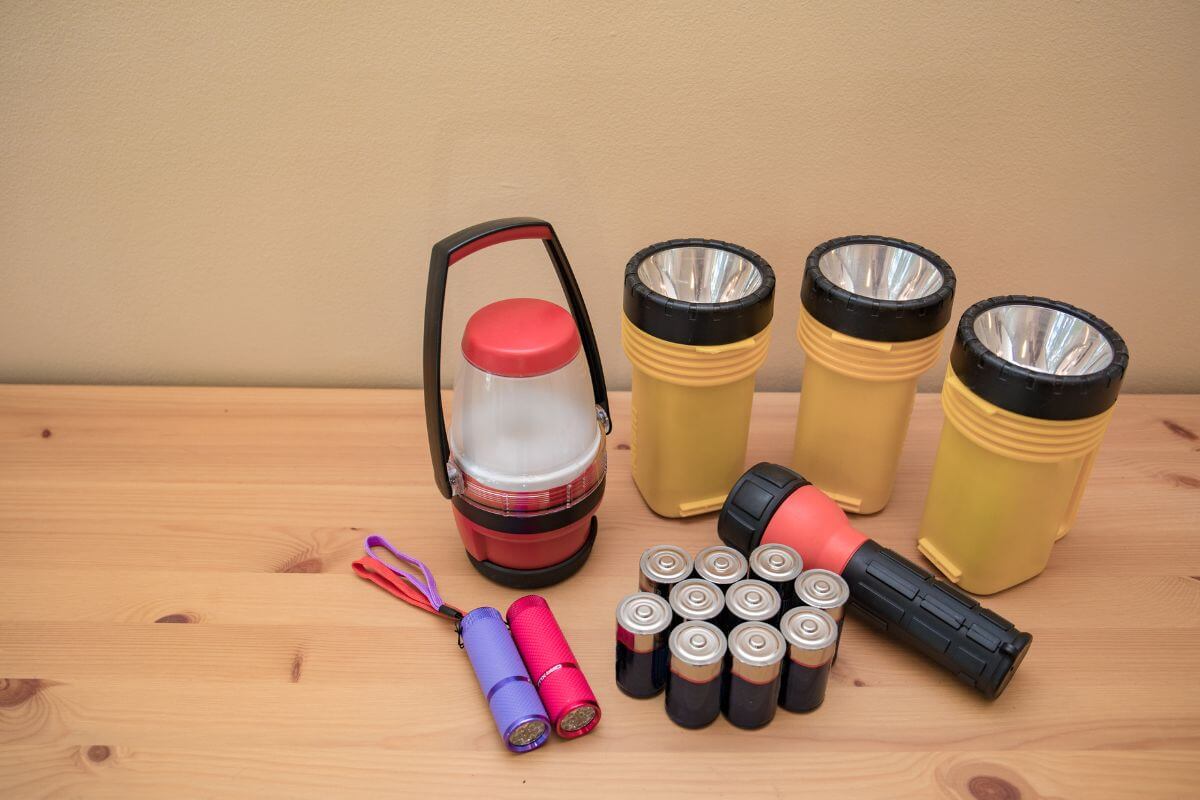
- Stay Informed – Rely on social media, radio, television, and sirens for storm updates. Carrying a National Oceanic and Atmospheric Administration Weather Radio is recommended for those who work or recreate outdoors.
- Seek Shelter Indoors – If available, head to the basement—preferably under a sturdy workbench or mattress. If no basement, choose an interior room without windows, like a bathroom or closet.
- Secure Outdoor Items – Move or secure anything the wind can pick up and toss. Bring trash cans and hanging plants indoors, or secure them tightly.
- Find a Sturdy Shelter or Go Low – If outside, seek refuge in the nearest solid structure. If no buildings are nearby, lie low in a ditch or low-lying area, and cover your head with your arms. If you are boating or swimming, leave the water and find a safe place on land.
- Avoid Overpasses and Bridges – Contrary to popular belief, they offer little protection. Choose flat terrain over elevated structures.
- Watch for Debris – Flying debris can cause serious injuries or fatalities.
- Stay Alert – Even after the tornado passes, be cautious of sharp or unstable objects.
Remember, the key to staying safe during a tornado is to stay informed, seek shelter in a sturdy location, and be mindful of potential flying debris. Montana’s vast landscapes may offer beautiful vistas, but it’s always best to prioritize your safety when severe weather strikes.
Understanding Tornadoes
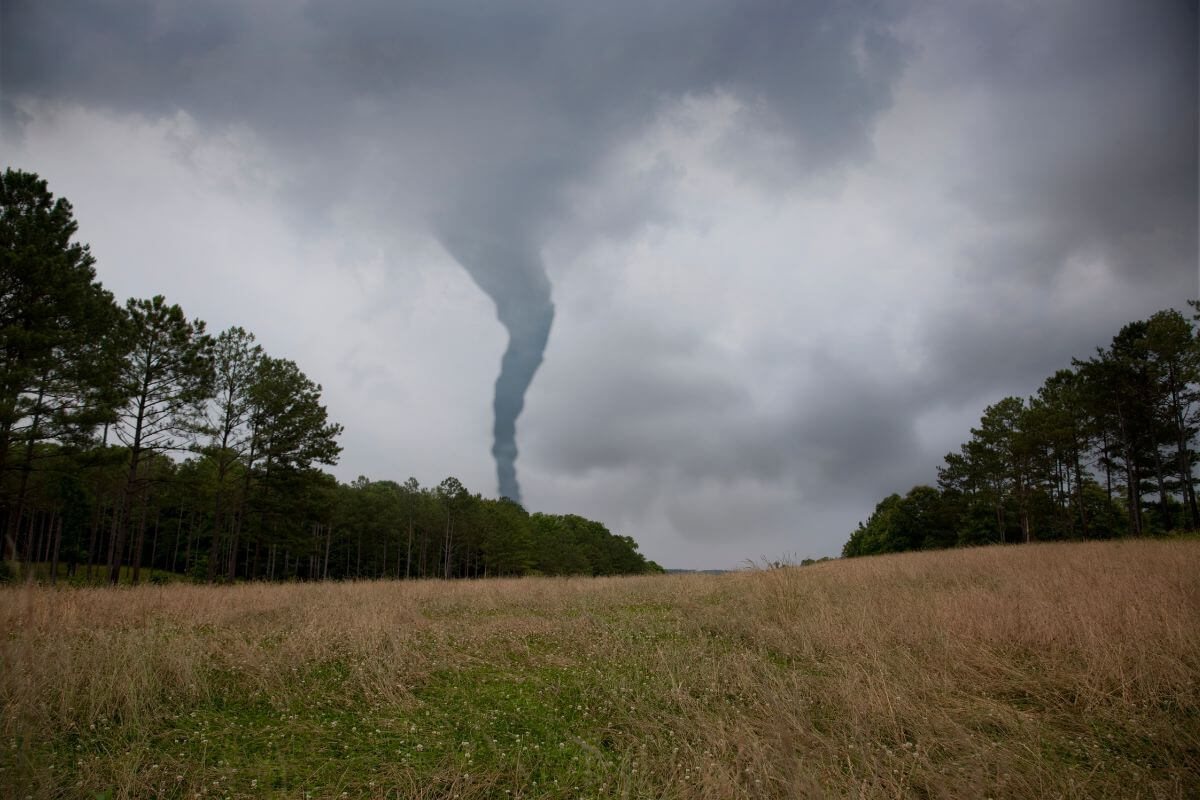
Tornadoes can be both awe-inspiring and terrifying. But how well do we know them, especially in the context of Montana? Let’s look at these natural phenomena to better comprehend their behavior, frequency, and impact in the Treasure State.
Tornado Facts

To demystify how a twister forms, we need a moist layer near the Earth’s surface at the lowest levels and some wind shear in the atmosphere. These two key ingredients — low-level moisture and wind shear — are the essential players in the tornado formation game.
Wind shear, a shift in wind direction with height up to the mid-levels of the atmosphere, adds a twist—literally. It creates a rotating column of air, setting the stage for a potential tornado.
Now, you may have heard the term “funnel cloud.” These are like extending, spinning fingers of clouds that reach towards the ground but never quite make contact. When they do touch down, they officially become a tornado.
However, much like hurricanes in Montana, tornadoes that grace high mountain peaks are pretty rare. The topography interferes with the necessary conditions, making them more of a spectacle than a frequent occurrence.
So, to sum it up, the recipe for a tornado calls for a moist surface and a twisty atmosphere. But don’t hold your breath for a mountain-top twister; they’re the unicorns of the tornado world.
EF Scale
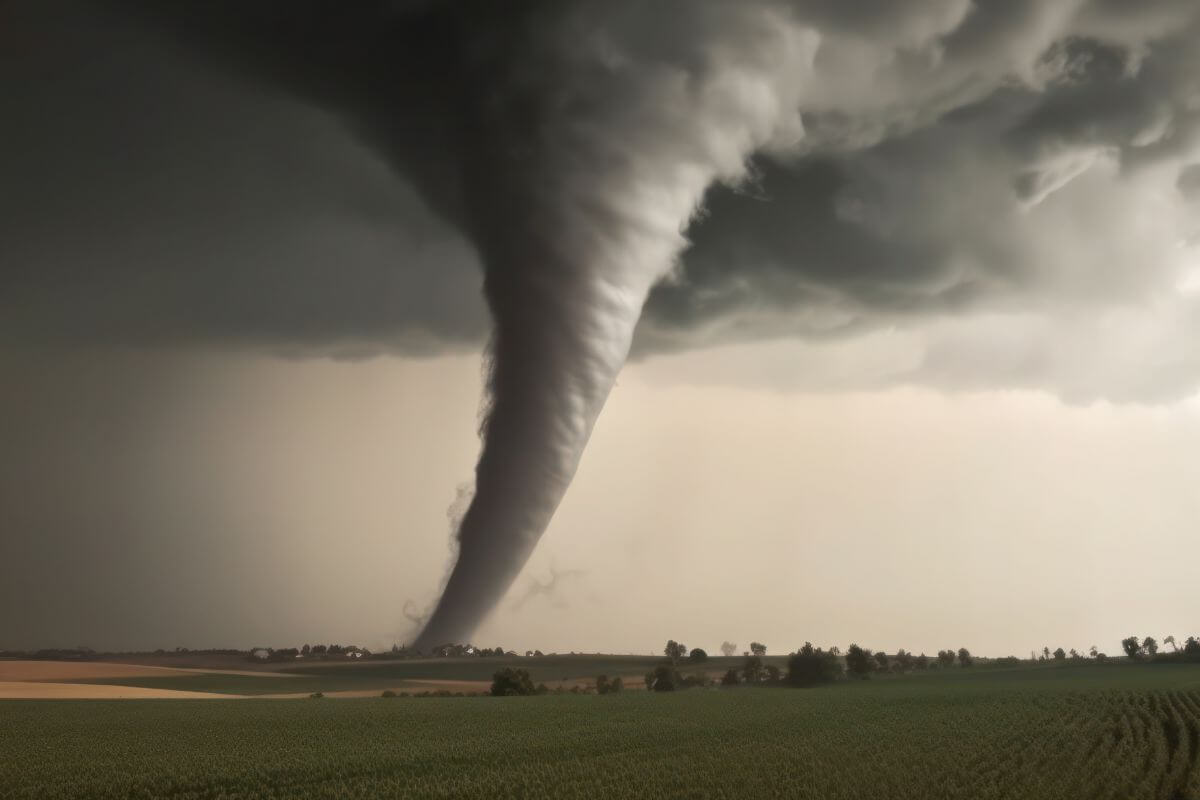
You might be wondering how we measure the intensity of a Montana twister. That’s where the Enhanced Fujita (EF) Scale comes in. Developed by the National Weather Service, this tool assigns a tornado a ‘rating’ based on estimated wind speeds and the resulting damage.
The Enhanced Fujita or EF Scale, which replaced the original Fujita Scale in 2007, is the gold standard for tornado intensity assessment.
| EF Rating | Wind Speed |
| 0 | 65-85 mph (105-137 kph) |
| 1 | 86-110 mph (138-177 kph) |
| 2 | 111-135 mph (178-217 kph) |
| 3 | 136-165 mph (218-266 kph) |
| 4 | 166-200 mph (267-322 kph) |
| 5 | Over 200 mph (322 kph) |
Determining the tornado scale relies heavily on damage assessments. This process can be particularly challenging in eastern Montana because of its vast landscape and rural nature. However, the National Weather Service has developed guidelines to help meteorologists make accurate determinations, even in these less-populated regions.
Understanding the EF Scale is essential for Montanans, as it provides a tangible way to gauge the potential impact of an approaching storm. By familiarizing yourself with the scale, you’ll be better prepared to heed warnings and take appropriate safety measures when the skies turn ominous.
Montana Tornadoes: Are Twisters Rare Final Thoughts
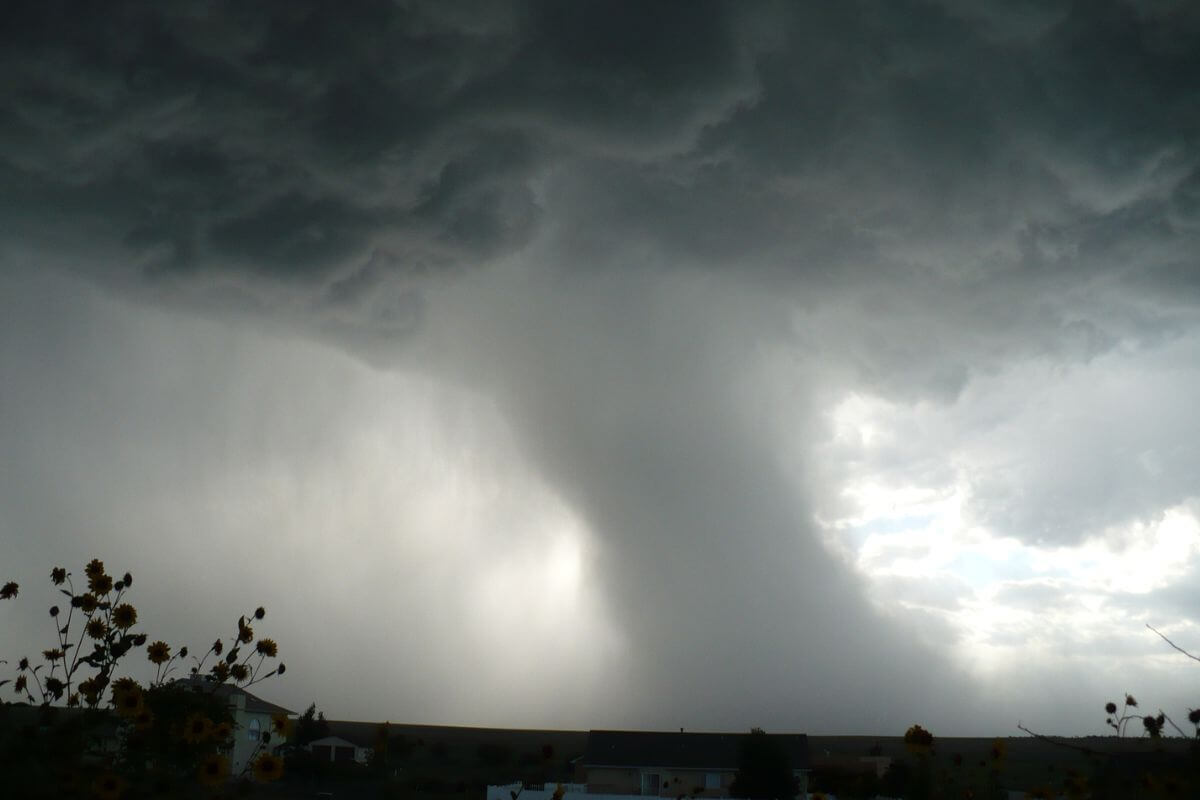
Montana’s relationship with tornadoes is a complex one. While the state is not as tornado-prone as Tornado Alley, it has seen its fair share of these spinning storms.
The risk is relatively low, with most tornadoes being small and touching down in sparsely-populated areas. However, it’s crucial to stay informed and prepared, especially if you’re in eastern regions like Wibaux County, which is a known tornado hotspot.
Understanding the historical data and tornado expectations and following safety tips allows you to enjoy Montana’s sweeping landscapes without letting the occasional twister talk put a damper on your adventure.
Remember, while Montana’s skies may occasionally stir up a twister, they’re far from the relentless fury found in Tornado Alley. So explore Big Sky Country with awe and respect for its natural wonders.
Montana Tornadoes FAQs
1. Is Montana Part of Tornado Alley?
While there is a lot of debate around the exact boundaries of Tornado Alley, scientists generally agree that Texas, Oklahoma, and Kansas are prominent states within the region due to their high risk of tornadoes. Montana, on the other hand, is typically excluded from Tornado Alley.
2. Does Montana Get Hurricanes?
Montana is generally unaffected by hurricanes, earthquakes, or tornadoes, making it a safe state.
3. Does Montana Have a Lot of Storms?
Montana experiences various weather conditions, and storms are common in the state. In the summer, Montana can experience thunderstorms, while in the winter, snowstorms are common.
4. Does It Rain a Lot in Montana?
Montana receives an average of 15.2 inches of rainfall yearly, making it the sixth driest state in America.
Get acquainted with Montana through the articles below:
- Montana’s Seismic Activity
- Humidity Levels in Montana
- How Windy Is Montana
- Top Weather Spots in Montana
- https://www.weather.gov/mkx/taw-tornado_myths
- http://www.ncdc.noaa.gov/stormevents/choosedates.jsp
- https://www.ncei.noaa.gov/access/monitoring/tornadoes/ytd/7
- https://www.spc.noaa.gov/climo/torn/fatalmap.php
- https://www.mass.gov/info-details/tornado-safety-tips#
- https://www.fema.gov/sites/default/files/2020-07/tornado-risk-hazards-southeast_recovery-advisory.pdf
- https://www.weather.gov/oun/efscale
- https://www.flickr.com/photos/160831427@N06/38366282064
- https://www.flickr.com/photos/vogelium/14276324920

